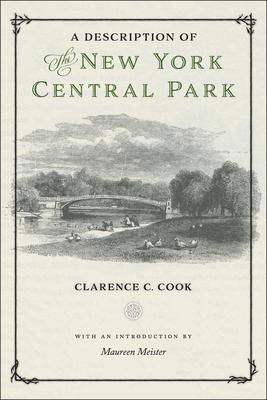In 1858, American landscape artists Olmsted and Vaux beat out 32 competitors for the right to design New York City’s iconic Central Park. Landmarks within this sprawling urban setting including Sheep Meadow, Bethesda Fountain and Belvedere Tower all came out of their vision for a relaxing and naturalistic urban oasis. A Description of New York Central Park, originally printed in 1869, not only exposes the tension and backlash faced by Frederick Law Olmsted and Calvert Vaux during this expansive project, but also a defends their legendary vision, which forever changed the way blueprint public space.
This reprint includes original illustrations and wood engravings, many that still span the 843 acres of the park today, and some that have vanished like the city buildings surrounding it. With an original and untold introduction, Maureen Meister reveals how the book’s publication was part of a greater campaign by park’s two infamous designers to uphold their ideas for their ideas for the space that would become the most visited urban park in the United States.
This book uncovers the ways the park and it’s creators paved the way of urban design and transformed the way we think about common space. It’s visual aid allow shows how and why Olmsted and Vaux believed the park should be a reflection of the city in which it encompasses, including natural vegetation and accessibility to all regardless of class or status. And Meister’s addition to this rich and preserved history provides hidden insight as to how the publication of this book was a successful tactic by the cultural and artistic leaders of the 1860’s tireless fight to secure the grand metropolitan achievement that remains as New York City’s Central Park.
| FindBook |
有 1 項符合
A Description of the New York Central Park的圖書 |
 |
A Description of the New York Central Park 作者:Clarence C./Meister,Cook,Maureen(INT) 出版社:New York Univ Pr 出版日期:2017-05-23 語言:英文 規格:精裝 / 16.5 x 24.1 x 2.5 cm / 普通級 |
| 圖書館借閱 |
| 國家圖書館 | 全國圖書書目資訊網 | 國立公共資訊圖書館 | 電子書服務平台 | MetaCat 跨館整合查詢 |
| 臺北市立圖書館 | 新北市立圖書館 | 基隆市公共圖書館 | 桃園市立圖書館 | 新竹縣公共圖書館 |
| 苗栗縣立圖書館 | 臺中市立圖書館 | 彰化縣公共圖書館 | 南投縣文化局 | 雲林縣公共圖書館 |
| 嘉義縣圖書館 | 臺南市立圖書館 | 高雄市立圖書館 | 屏東縣公共圖書館 | 宜蘭縣公共圖書館 |
| 花蓮縣文化局 | 臺東縣文化處 |
|
|
圖書介紹 - 資料來源:博客來 評分:
圖書名稱:A Description of the New York Central Park
|











